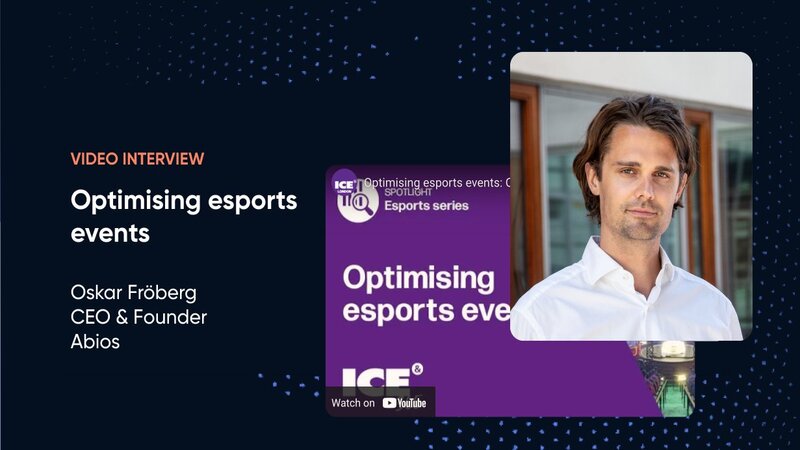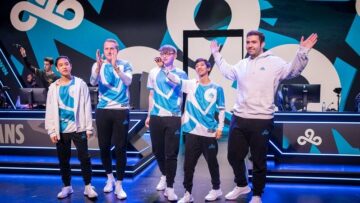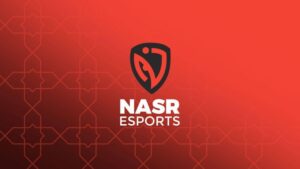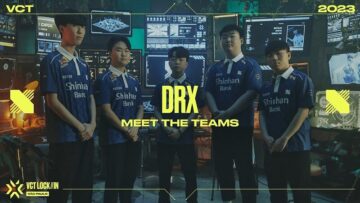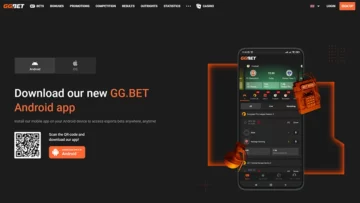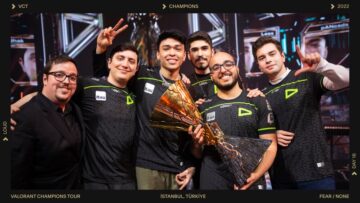Oskar Froberg Not Slow To Address The Issue Of Latency In Esports
In an interview conducted by Clarion Gaming’s Marese O’Hagen and posted on the business social networking site Linkedin, CEO and founder of esports data provider Abios, Oskar Fröberg spoke at some length about the issue of latency in terms of how it affects esports events.
He also addressed how the same issue can have an influence on live esports betting and explained not only how technology has been used to address these issues, but also what could be done in the future to improve and expand on the viewers’ experience.
However, before we take a closer look at what Mr Fröberg addressed in the video, let’s first clarify exactly what latency is and why it is an issue for esports games and also for esports betting.
What is Latency and Why is it Important?
Latency is the delay in time between an instruction being actioned by the user, and it being actioned on the screen. In terms of esports, this is exemplified when a player makes a movement or an action within a game, such as shooting at a goal in FIFA or trying to avoid an enemy in CS:GO, and the amount of time that it takes for their instructions to be carried out on screen.
If the action is completed seemingly instantaneously, then this is low latency, and this is what networks try to achieve when hosting esports gaming events.
However, if there is a notable delay between a player completing an action, and the action being followed within the game, then this makes playing esports very tricky, if not impossible and is an example of the dreaded high latency.
This, in turn, causes lag in the game, when the player’s actions seem to ‘lag behind’ those of their opponent due to the transfer across the network being slow.
A key issue regarding latency is not just the speed of the connection but the distance between the competitors to the host server.
As Mr Fröberg explains in the video, if two CS:GO teams are playing against each other on a server in Sweden, and one team is based in China and the other in Sweden, the Swedish team will have a huge advantage due to the higher latency experienced by the Chinese team due to their location.
As such, latency issues are more common over the Internet rather than on Local Area Networks, but even LAN events can experience infrequent issues with latency, although it is nowhere near as prevalent.
Clearly, latency is a major issue for global online esports events, and that is precisely what Mr Fröberg starts his interview by addressing.
Latency and Global Esports Events
After explaining the key issues with latency within the esports industry, Mr Fröberg explained that multiple countries worldwide are trying to resolve the issue but that it remains a “difficult problem to solve.”
Mr Fröberg explained that currently, the way the issue is dealt with is to organise qualifiers at regional levels, where the issue of latency is not as notable and then to have finals of the top esports tournaments hosted over a Local Network in a single location.
He also remarked that there was no effective way of dealing with latency on a global scale at present. Although companies are working on that, at the moment, it appears the current format of regional qualifiers and LAN Finals & Playoffs are here to stay for the time being.

Latency and Live Esports Betting Services
Mr Fröberg also pointed out that there are more issues with latency other than simply within the realm of competitive esports gaming. He continued:
“Other latency issues that are apparent for us as a data company and an odds provider is when we offer live bets or live events for punters to place bets on a match, latency is, of course, hugely important for us.
We need to ensure that the data we consume, the data our models work on is not delayed or is delayed as little as possible. What’s most important for us is to make sure that there aren’t any punters, who have faster data than we do.
Let’s say that our models are running on a cloud server that’s based in Ireland, but the match is being played in Brazil, and the data we are consuming and that we are powering our models on is being transferred from Brazil to Ireland and as such, somebody who is actually at the event in Brazil, maybe in the arena standing behind the players, can consume the data, the information, faster, maybe half a second or a few seconds faster than we can, then that player would have a huge advantage against the house.”
Essentially, it would mean that someone could bet on Valorant games, for example, from within the arena, knowing that their bet will be a winner, and thus they could exploit the best esports betting odds available for the tournament to guarantee themselves a profit.
There are ways for companies to resolve this problem, including using bet delays and closing and opening bets at different times.
Mr Fröberg also pointed out that latency is also used for integrity purposes with tournament organisers imposing delays on public streams to ensure that viewers and players across the globe get the same information at the same time, even if that information is delayed by several minutes behind what is happening on the server.
Recognising the issue of latency is perhaps the greatest challenge facing esports industry companies and leaders Mr Fröberg stated:
“That’s something that we and the rest of the industry and even the game developers and game publishers need to work hard at finding solutions for, which isn’t always simple.”
Can Technology Solve the Problem of Latency?
Mr Fröberg also commented somewhat positively on the fact that technology can and is being developed to solve or reduce the issue of latency.
He used the example of Valorant’s aims to have a global cloud system, which would have a maximum latency of around 35m/s, as an example of how companies are developing tech to address the issue, although he warned that the system employed by Valorant hadn’t quite achieved its goal as yet.
Mr Fröberg explains how he and his friends, when they queue to play Valorant, are consistently matched with opponents from near to their location in Sweden, such as other European countries.
However, Fröberg also commented that large cloud server and technology companies, such as Amazon, AWS and Google, may take the forefront in developing solutions to address the issue of latency.
“But while technologies are being developed, I haven’t seen anything yet which really has solved the problem,” explained Fröberg.
Making The Future Of Esports More Exciting – New Features
Mr Fröberg said that he felt this was an area where the esports industry could improve a great deal, citing that while he has seen improvement in terms of presentation of esports within this industry since Twitch first started activities in 2011, there hasn’t been anything ‘revolutionary’ since then.
Some of the recommendations he made to improve the esports experience included:
- Allowing customers to have the option to listen to voice communications between the teams in replays of events.
- Allowing viewers to access co-streams on an expanded number of games. These are where official streams are carried by a number of other popular streamers and content creators, allowing them to produce their own show and commentary on the game, as has been happening in Dota 2 for a number of years now and is starting to happen in other games too.
- Greater Customisation Options – Such as allowing viewers to view a match from a player’s point of view, or perhaps even to view a match using your own personal camera, perhaps integrating this with VR technology to allow the viewer to immerse themselves in a game as a ‘ghost’.
In pushing toward a global esports network, the key obstacle innovators have to solve is latency. With a two-pronged attack on addressing this issue in all its forms and enhancing the viewership experience in the ways listed above, Mr Fröberg offers us a glimpse of the near future of esports.
However, achieving that vision as reality is going to require some work just yet.
